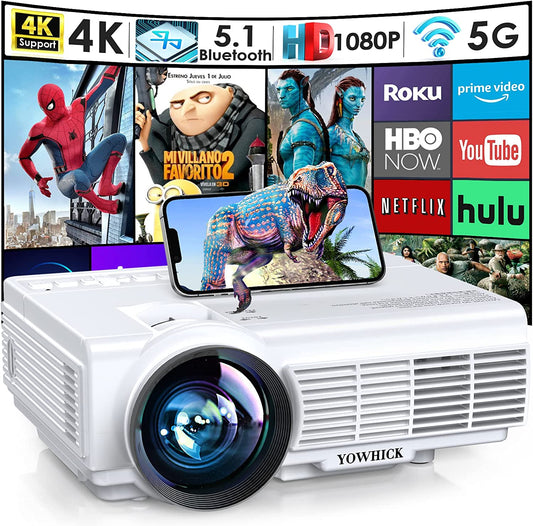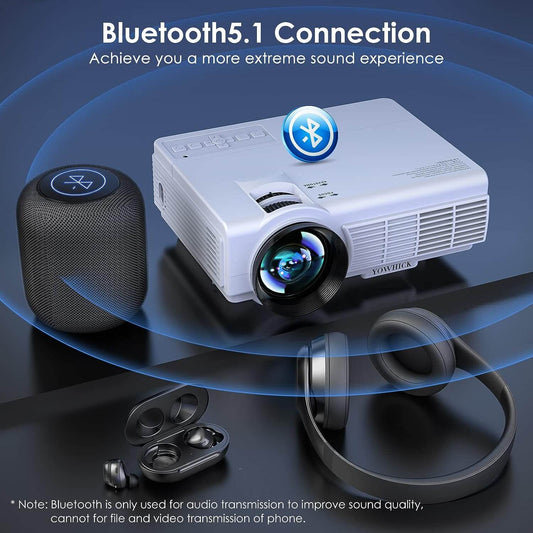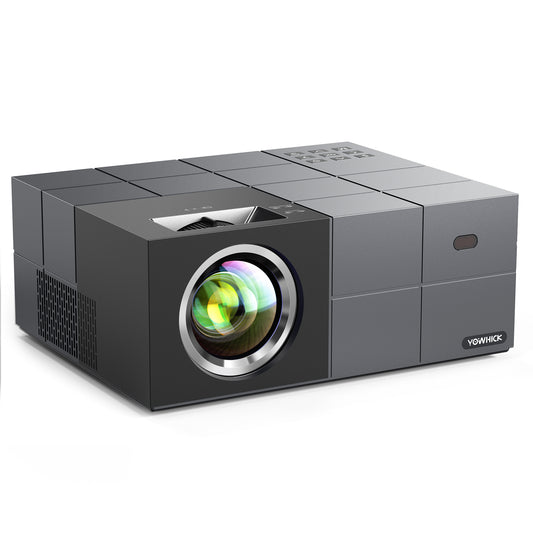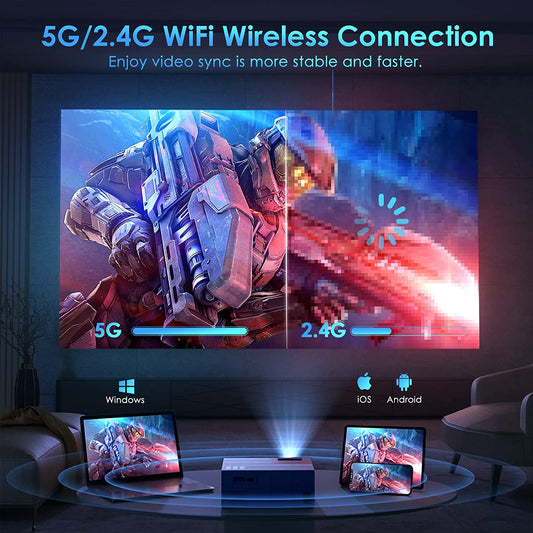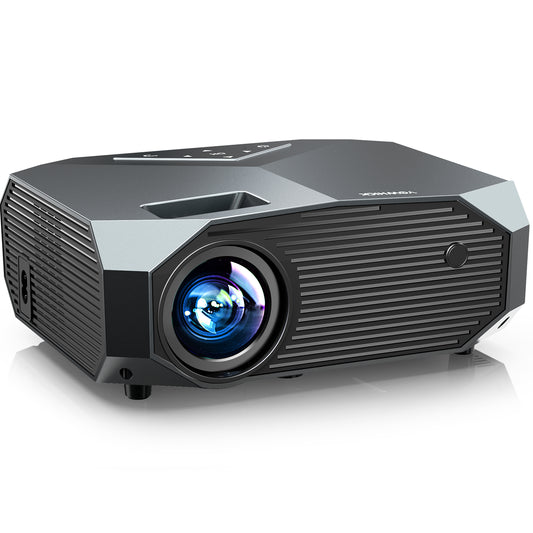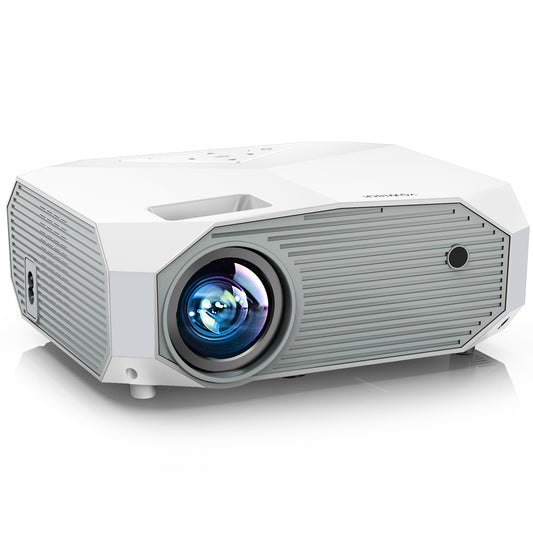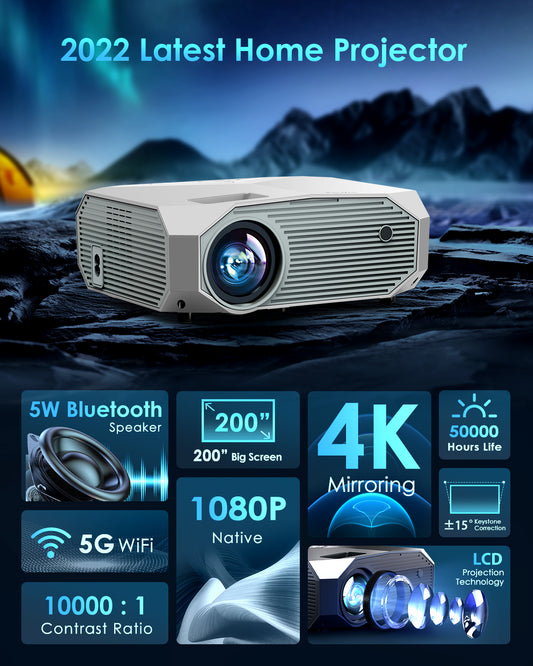Are you ready to unlock a new dimension of entertainment and convenience? Connecting your phone to a projector wirelessly opens up a world of possibilities, allowing you to effortlessly share your favorite movies, photos, presentations, and more on a larger screen. Say goodbye to cumbersome cables and embrace the freedom of wireless connectivity. In this comprehensive guide, we will explore different wireless connection methods and provide you with a step-by-step walkthrough to connect your phone to a projector wirelessly. Get ready to elevate your multimedia experience as we dive into the seamless world of wireless projection.
Exploring Wireless Connection Methods: Connect Your Phone to a Projector with Ease
Are you tired of squinting at your phone's small screen or passing it around to share content with others? Connecting your phone to a projector wirelessly is the ultimate solution to take your mobile experience to the next level. With various wireless connection methods at your disposal, you can effortlessly stream videos, display presentations, or showcase your favorite photos on a larger screen.
- Screen Mirroring via Wi-Fi: Many smartphones offer a built-in screen mirroring feature, such as Apple's AirPlay for iPhones or Google Cast for Android devices. To use this method, ensure that your phone and the projector are connected to the same Wi-Fi network. On your phone, access the screen mirroring option (typically found in the settings menu) and select the projector or device to which you want to mirror your screen. Once connected, your phone's display will be wirelessly mirrored on the projector.
- Wireless Display Adapters: Wireless display adapters, such as Chromecast, Roku, or Amazon Fire TV Stick, provide an easy way to connect your phone to a projector wirelessly. These small devices plug into the HDMI port of your projector and allow you to stream content from your phone directly to the projector. Simply connect the wireless display adapter to your phone using the corresponding app or casting feature, and enjoy seamless wireless projection.
- Miracast or Screen Mirroring Devices: Miracast is a wireless display standard that enables you to mirror your phone's screen to a compatible device, such as a Miracast-enabled projector or a Miracast dongle. Ensure that both your phone and the Miracast device are connected to the same Wi-Fi network, enable screen mirroring on your phone, and select the Miracast device from the available options. The screen of your phone will then be wirelessly mirrored on the projector.
- Smart Projectors: Some projectors are designed with built-in wireless connectivity, allowing you to connect your phone directly without the need for additional adapters or devices. These smart projectors typically support wireless protocols like Wi-Fi or Bluetooth, enabling seamless screen mirroring or direct content streaming from your phone.
Step-by-Step Guide: Connect Your Phone to a Projector Wirelessly
To wirelessly connect your phone to a projector, follow these simple steps:
Step 1: Check Compatibility and Requirements
Before attempting to connect your phone to a projector wirelessly, ensure that your phone and the projector support the same wireless connection method, such as screen mirroring, Wi-Fi streaming, or Miracast. Also, make sure both devices are connected to the same Wi-Fi network or have the necessary compatibility.
Step 2: Prepare the Projector
Power on the projector and make sure it is connected to a power source. Allow the projector to warm up and reach its optimal operating state.
Step 3: Enable Wireless Connectivity on Your Phone
On your phone, enable the corresponding wireless feature or app required for screen mirroring or streaming. This may involve accessing your phone's settings, searching for screen mirroring options, or launching a specific app for wireless projection.
Step 4: Connect to the Projector
Depending on the wireless connection method you're using, follow the specific instructions:
- For screen mirroring via Wi-Fi, access the screen mirroring or casting option on your phone, select the projector from the available devices, and establish the connection. Your phone's screen will be wirelessly mirrored on the projector.
- If you're using a wireless display adapter, plug the adapter into the HDMI port of the projector. Follow the manufacturer's instructions to connect your phone to the adapter. This may involve downloading a corresponding app, entering a PIN code, or following on-screen prompts. Once connected, you can stream content from your phone to the projector.
- For Miracast or screen mirroring devices, ensure both your phone and the Miracast device are connected to the same Wi-Fi network. Enable screen mirroring on your phone and select the Miracast device from the available options. The screen of your phone will be wirelessly mirrored on the projector.
- If you're using a smart projector with built-in wireless connectivity, follow the projector's specific instructions to connect your phone wirelessly. This may involve accessing the projector's settings, connecting to the Wi-Fi network, or using a dedicated app for wireless projection.
Step 5: Adjust Settings and Enjoy
Once the wireless connection is established, you may need to adjust the settings on your phone or the projector for optimal display quality. This includes adjusting the resolution, aspect ratio, or picture settings. Refer to the user manual of your phone and projector for guidance on adjusting these settings.
With your phone successfully connected to the projector wirelessly, you can now enjoy your favorite movies, share presentations, showcase photos, or even play games on the big screen. The wireless connection offers convenience, flexibility, and the freedom to move around while controlling your content from your phone.
Troubleshooting Tips: Overcoming Common Challenges
While wireless connections provide great convenience, you may encounter some challenges along the way. Here are a few troubleshooting tips to help you overcome common issues:
- Weak Wi-Fi Signal: If you experience a weak Wi-Fi signal, ensure that your phone and the projector are within the range of a stable Wi-Fi network. Consider moving closer to the Wi-Fi router or using Wi-Fi extenders to improve the signal strength.
- Compatibility Issues: If you're unable to establish a wireless connection, verify that both your phone and the projector support the same wireless connection method. Some older projectors may not be compatible with certain wireless technologies. In such cases, consider using alternative connection methods, such as wired connections or different adapters.
- Interference and Lag: If you encounter lag or inconsistent performance during wireless projection, minimize interference from other electronic devices and ensure that your Wi-Fi network is not overloaded with heavy internet traffic. Avoid placing your phone or the projector near other devices that emit strong wireless signals.
- Software Updates: Keep your phone's operating system, apps, and projector firmware up to date. Software updates often include bug fixes and performance improvements that can enhance the wireless connectivity experience.
Conclusion
Wirelessly connecting your phone to a projector opens up a world of possibilities, allowing you to share and enjoy content on a larger screen with ease. Whether you're streaming movies, presenting slideshows, or showcasing your photos, the wireless connection provides convenience and flexibility.
By exploring different wireless connection methods, following the step-by-step guide, and employing troubleshooting tips, you can confidently connect your phone to a projector wirelessly. Embrace the freedom of wireless projection and elevate your multimedia experience by immersing yourself in the captivating visuals displayed on the big screen. Unlock the potential of your phone and projector combination and enjoy seamless wireless connectivity.


